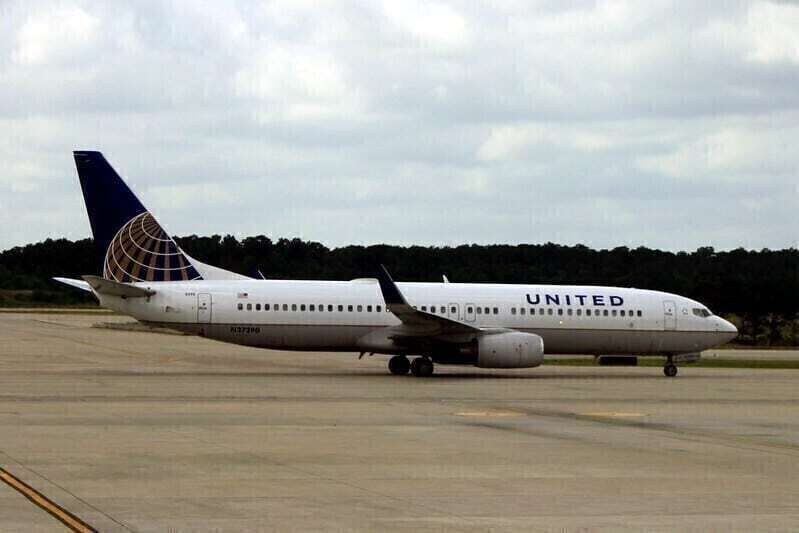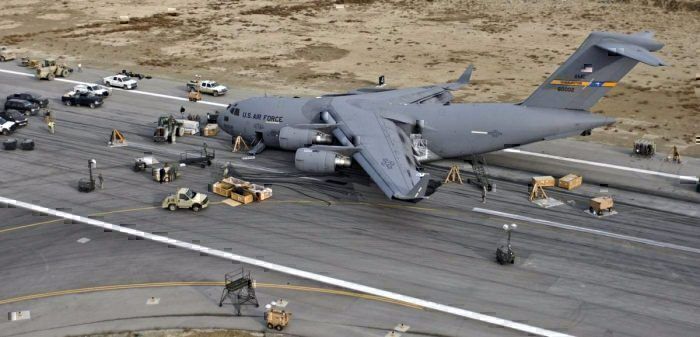A United Airlines Boeing 737-800 had a difficult time landing at Denver airport yesterday when its left landing gear collapsed causing a shower of sparks. The aircraft was attended by emergency services, but nobody was injured in the incident.[caption id="attachment_59163" align="aligncenter" width="700"] A United Airlines Boeing 373-800 had problems with its landing gear. Photo: Prayitno via Flickr[/caption]
Troubled landing
Passengers on United Airline's flight UA-2429 from Newark to Denver were in for surprise when the Boeing 737-800 they were traveling on kicked up a shower of sparks as it landed in Denver. Initially, crew assumed that a tire had blown and asked for emergency services to attend as a precaution. However, upon further inspection, it became clear that the left main landing gear, although down, did not support the aircraft.
The aircraft remained stranded on the runway as emergency crews examined the collapsed gear. The aircraft had come to rest on the left engine cowl, the nose gear and the right main gear after the main gear gave way on the left-hand side.
Cabin crew and passengers were eventually allowed to disembark via the front right steps and were bussed back to the terminal as the aircraft, registration N87513, was left behind on the runway.
United Airlines issued a statement regarding the incident saying that the aircraft "experienced a mechanical issue upon landing. All customers have been bused to the terminal where our customer service teams are currently assisting them. The aircraft has been taken out of service and is being inspected by our maintenance teams."
Landing gear failures
Although scary to watch and even scarier for those involved, landing gear failures are not uncommon. In fact, DVI aviation lists 17 potential reasons for landing gear failure which it says are “commonâ€. These include; improper rigging, repairs or maintenance, uplocks which fail to release or down locks which fail to engage, and wheels becoming jammed or hung up in wheel wells.
In addition to all the mechanical and technical issues which could cause landing gear failure, there is also the human aspect. Sometimes pilots make mistakes. In these cases, the landing is called a gear-up landing. While a belly landing means that technical issues actually prevented the pilot from using the landing gear.
Landing without gear
A belly landing is one of the most common incidents involving aircraft. According to Science Direct, 10% of incidents involving aircraft are due to landing gear failure. They are generally non-fatal, as in yesterday’s incident at Denver Airport. Belly landings require a great deal of skill as the pilot must ensure the aircraft does not roll, flip or catch fire on the runway. Any adverse weather conditions may affect how successful the landing is.
If a pilot is aware of a landing gear failure in advance, they may choose not to use any landing gear at all. After all, a level plane is easier to control than a wonky plane, even if it is causing damage to the aircraft. In the incident at Denver Airport, the landing gear collapsed upon touchdown, meaning the pilot no warning to prepare for a full belly landing.
While landing gear failures are nothing that pilots and ground crew can't handle, they are still shocking for passengers. Many passengers on board the United flight may have been cursing the long journey home for the holidays. Now, they will just be relieved to reach home safe and sound.
We’d love to hear if you’ve ever experienced an issue with landing gear failure. Let us know in the comments.


